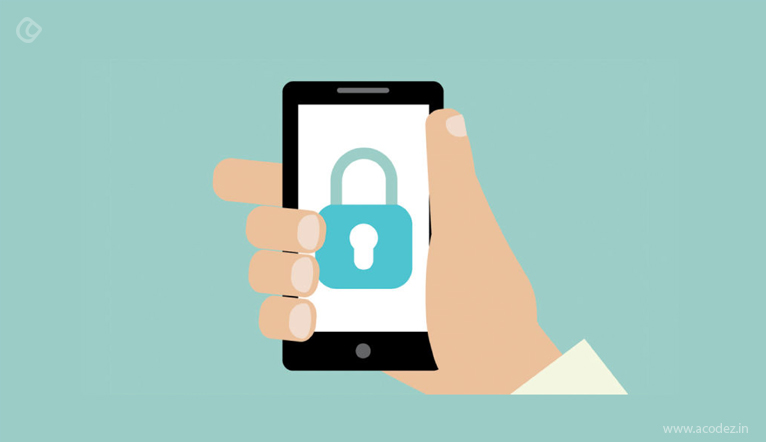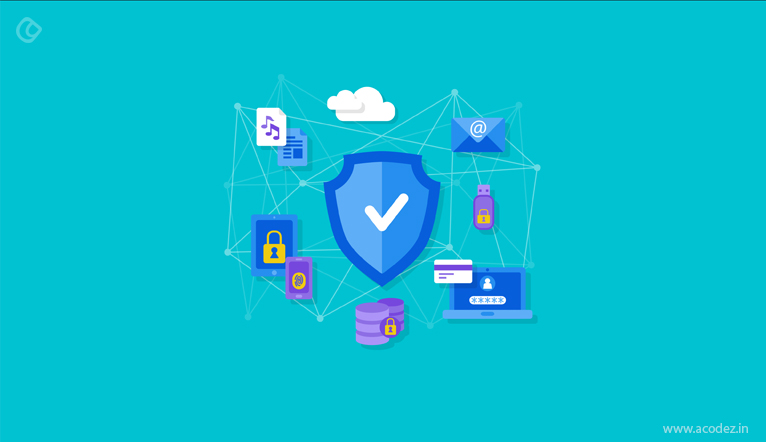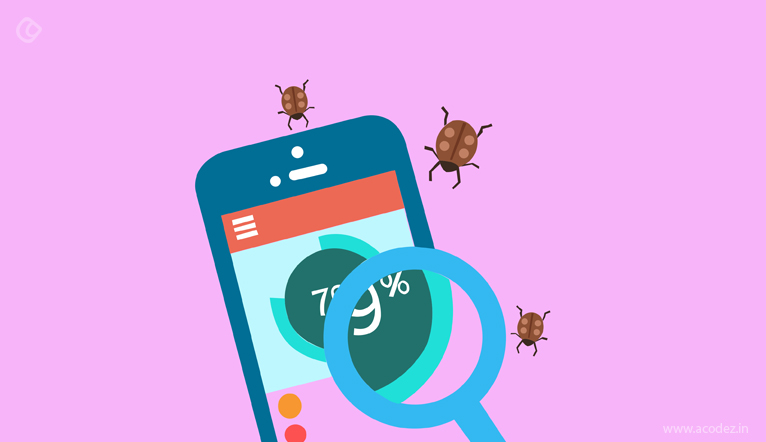
Do you own a business online and is it very much over the mobile and other handy devices? Then, it is time to gather up yourself and be prepared to block the evil eye out of the way. In the year 2017, let us ensure that our mobile apps are secure and there is no platform for creepy business here.
Be smarter than the hacker – make it your motto and do everything under the universe that takes to keep away any unauthorized entry from peeking in. The mobile era is yours and your people are all over the mobile platform, do not miss the chance. Make way for change to happen.
The most important thing that you need to consider is how secure is your app? Unless an omnipresent business is capable of providing its people with 100% security, will it be able to perish and succeed in the long run.
Now let us check out how you can ensure that your mobile app is perfectly secure. Here, are some tips on ensuring the security of your mobile apps:
#1 What devices are being used
A lot of devices that we carry and bring to the work place where the apps are developed, are used for testing, as well as forever. The problem is that the personal devices are vulnerable. We have no idea of the dirt (viruses) that they contain. Also, many a time, it happens that we use our personal devices to carry out our official chores, while we have no idea about what kind of evil resides in here. It is not necessary that you are aware of the malicious content that might be hiding in there.
One of the articles in Wired reported that millions of android devices around the world are being attacked and are carrying malicious content every moment. Considering this, how can we be so sure that our devices are safe. Now, don’t think that iOS is safe. It has its share of maliciousness.
millions of android devices around the world are being attacked and are carrying malicious content every moment
Each time you make an update on the app, using these affected devices to access or bring about the changes, how do you expect it to stay safe?
Ensure that your users can download your apps only via authorized or trusted app store.
Why not use just one device dedicatedly for creating, modifying, maintaining and updating your app, which will ensure that it is safe from the prying eyes of the evil.
#2 The networks: are they safe?

Check out the networks over which you have accessed your app. Or the networks through which you were trying to work on this. We have already mentioned that using numerous devices for your app is not a safe option. Think about all the places wherein your employees might have carried this app and accessed it upon. It could be a coffee shop or an airport, where a number of people step in and step out per hour every day. We have no idea what goes in and comes across through these networks and your app was there.
And, think about another situation when you carried the central device outside and connected it to an open Wifi network there, the app’s crucial data – would it be safe?
You can ensure that your networks are safe by implementing containerization, which includes creating encrypted containers, wherein you can store data and files.
You can actually hire a network security specialist, who can conduct the penetration testing to check for vulnerabilities on your network, thus ensuring that your data is safe and protected from others.
You can encrypt your connection using Virtual private network (VPN), secure sockets layer (SSL) or transport layer security (TLS) alongside database encryption.
Try implementing federation, which is a security measure, spreading out resources across servers, ensuring that they are not residing in a single place, while keeping away the key resources from the users.
#3 Threat intelligence can save your app’s life
Ever heard of it? Not many are aware of its very existence. This is one of the solutions that professional experts have crafted to help businesses that have been identified to be prone to such dangerous attacks – with all necessary help. They are equipped to fight a possible attack that can happen at any given point of time from an unknown network or source.
A lot has been induced into improvise the security structure of these apps though a perfect solution is yet to be devised to tackle security issues forever. But, whatever little we have got let us implement it and run our apps without any malware.
#4 Let us start equipping our app’s security from the scratch
Like we have discussed, the importance of mobile app security needs to be taken into consideration once you start preparing your app to restrict malicious ware. But, securing a mobile app differs from the traditional web apps in which the data and other details are stored safely on the server, while the browser is just the interface that connects the two. The code that is located inside the device, once the app is downloaded, making it prone to the dirt.
The code may be vulnerable to external attacks, which the network and data security fail to protect, making it affected. Anything can cause vulnerability starting from errors in your code, failures that happen due to ignorance while testing happens and bugs go unidentified.
You can protect the code of your app using encryption. Of course, minification and obfuscation are some of the things that we all implement to protect our code. It is always good to implement sophisticated and well-supported algorithms infused with API encryption to save the data.
#5 Identification, authentication and authorization
This is something that you should be strongly thinking about to protect your apps. Collaborate the brilliance of authentication, authorization and APIs, which will collect relevant data from the users as to who they are, which adds a layer of security to the process of login.
Ensure that your app is not relying on someone else’s API for functionality. If so, remember you are dependent on someone else’s code to stay secure and verify that these provide access only to the essential areas of your app, thus minimizing vulnerability.
OAuth2 is one of the standard protocols that you can implement to ensure that you have a secure connection that is accomplished through user-specific and single-time tokens. Once you have installed this on your server that clears the authorization part, it will be customized to meet your needs, allowing you to grant user permissions for the interface between end users and client through credentials, which could be, for instance, a two-factor SMS question.
#6 Securing customer data through an excellent mobile encryption policy
We have already discussed how a mobile app revolves around various factors that needs to be protected and secured well. Of these the code and data are the most important. The bandwidth, performance and standard of the devices are some of the factors that could effect the performance of the app along with its security.
When a large amount of data is stored on a device, the more there are chances that it becomes vulnerable.
There are certain apps, which when hacked start leaking out customer data and the users are unaware of this. This could include anything and everything, such as the user demographics.
File-level encryption can be implemented to protect data per file basis. This also helps to protect data that is at rest, which protects it from being read, though it might be interpreted.
You can take a strong move in this case by encrypting mobile databases, by utilizing the Appcelerator platform, which offers an encrypted SQLite module. This provides provisions to store local data safe.
Also, make sure that while designing your apps these do not contain critical customer data, including their password, etc., which will be saved on the device. If so, ensured the storage is given sufficient encryption.
#7 Test your app’s software again and again

We know that a lot of things have to be taken into consideration when designing our app. But, testing is one of those important steps that will help to ensure that your data is safe over the app.
Don’t test it just once, but test your app’s code many times. Start testing during the process of developing your app.
The functionality and usability are the major aspects of an app apart from the code that needs to be tested for security, which helps to track down vulnerabilities in the code, helping you to fix these before the app finally goes live.
Penetration testing is one of the methods that you can utilize to examine network or system vulnerabilities. Also, test well, applying the API authentication, authorization and session management protocols to ensure that it is safe.
It is important that you conduct security testing and vetting regularly to ensure that there are no flaws in your app. This will help to secure your app’s source code against any kind of vulnerabilities that may include input validation concerns, which can kill your app.
Ensure that you are implementing an agile app – which makes it easier to update and dispatch.
If you are not sure about how this is done; seek online help. There are certain online tools such as the mobile app reputation service from Micro, which helps to scan the app and monitor the resource consumption along with performing security checks.
Mobile apps are an intricate part of businesses these days, which makes it necessary that your business has one. But, you need to ensure that these are secure from external intrusions.
Acodez is an award-winning digital agency based in India. We offer mobile app development in India and are also a leading web development company in India. We are experienced at developing sophisticated web & mobile apps and websites that exhibit the best end-user experience. We are also a Digital Marketing agency based in India offering all kinds of inbound marketing services.
Looking for a good team
for your next project?
Contact us and we'll give you a preliminary free consultation
on the web & mobile strategy that'd suit your needs best.








